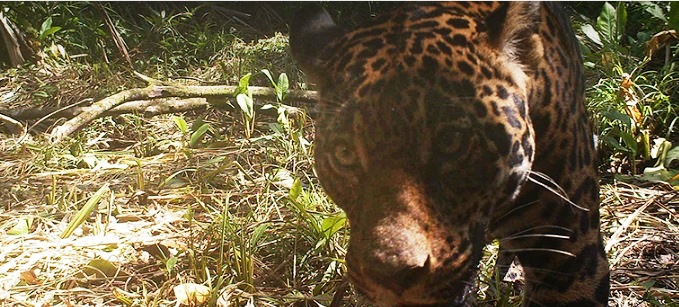A proposed canal project in Nicaragua that would connect the Caribbean Sea with the Pacific Ocean could seriously deplete and disrupt the habitats of a number of animals, including some that are endangered. This is the key finding of a new study, published in the journal PLOS ONE, which was conducted by scientists from Michigan State University (MSU), the Global Wildlife Conservation and Panthera, an organization devoted to wild cat conservation.
In an effort to eliminate the damage, a team of researchers, including one from Michigan State University, has developed a conservation plan that, if implemented, could retain the habitat that is crucial for the animals’ survival.
As it stands now, the project calls for the building of an introceanic canal that will connect the two bodies of water, bisecting the Central American nation and possibly threatening populations of jaguars, white-lipped peccaries and the globally endangered Baird’s tapir.
The research used occupancy models to determine which part of the canal’s proposed path provides crucial habitat to the country’s rare large mammals.
“The proposed canal would divide the Mesoamerican Biological Corridor and limit the movement of terrestrial wildlife,” said Gerald Urquhart, an assistant professor in MSU’s Lyman Briggs College and a team member. “In particular, wide-ranging species like jaguars and tapirs could be heavily impacted.”
The Mesoamerican Biological Corridor is a multi-country effort to protect continuity of habitat from Mexico to Panama. It runs along the eastern side of Nicaragua.
The study found one of the key remaining area of suitable habitat for large mammals in the path of the proposed canal is a relatively thin strip of forest from the eastern edge of what will be known as Lake Atlanta, a manmade body of water near the Caribbean coast. Without this strip of land, the animals would be cut off from the larger habitat south of the canal and would struggle to find others for breeding.
The paper offers five recommended adjustments to the canal design that would make it easier for large mammals to move through the area. Among them are to move the location or adjust the size of Lake Atlanta to minimize flooding of those habitat areas, and to build small, forested islands that species could use as refuges. Nonetheless, the impact of the canal could be even greater if it leads to further deforestation of the remaining protected areas.
The International Union for Conservation of Nature classifies jaguars as near threatened globally, but are rare in Nicaragua with a population of fewer than 500. Baird’s tapirs are close to critically endangered in Central America and many biologists believe that range-wide hunting has made the white-lipped peccary the most threatened mammal in Central America.
Other members of the research team are lead author Christopher Jordan, a former MSU graduate student who now works for Global Wildlife Conservation; Cody Schank of GWC and the University of Texas; and Armando Dans of GWC.
You may read the study below
Source & Image Credit: MSU































































